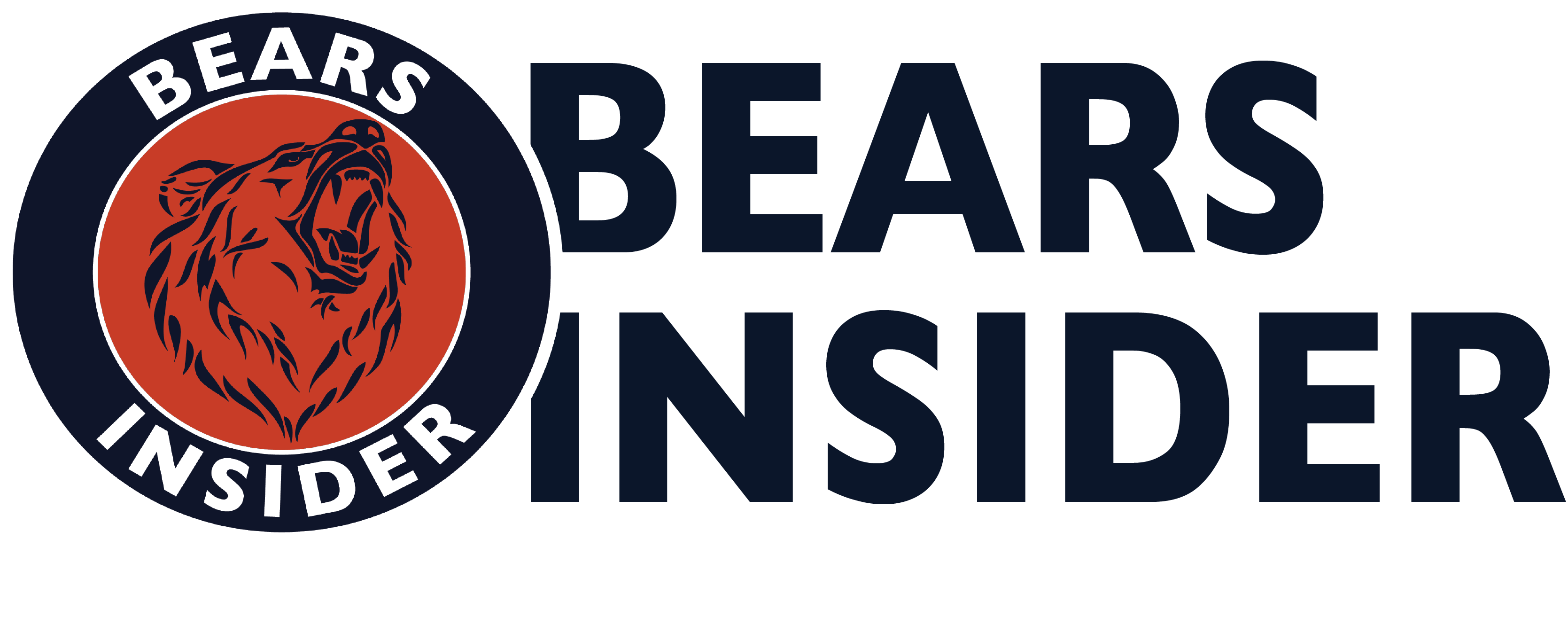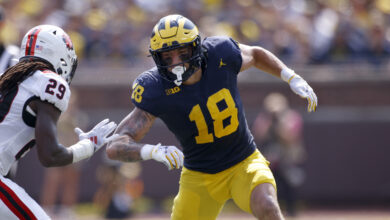
Metrics Show Playoff Expectations for Bears with Caleb Williams Are Realistic
The draft is over, and the Bears have their quarterback of the future. The Bears selected Caleb Williams first overall. He’s already begun to acclimate himself to the Bears and the NFL, and he’s taking in Chicago’s best. Of course, he bonded with fellow first-rounder Rome Odunze, but he’s also spending time with Keenan Allen, DJ Moore, Cole Kmet, and other teammates. Williams is getting standing ovations everywhere he goes in Chicago, and the pressure seems high. Justin Fields has departed after three losing seasons, and the fans are ready for the Bears to be a winning franchise again. That means high expectations for Williams, but are high expectations realistic? Can Williams live up to the hype, or will the Bears’ quarterback woes continue?
What's good, @CALEBcsw! ?@ChicagoBears pic.twitter.com/B5Vh6hCKsU
— Chicago Cubs (@Cubs) May 4, 2024
Let’s look at the statistics. Since the 2017 season, 19 rookie quarterbacks have started at least eight games, but only two have made the playoffs. The Patriots drafted Mac Jones in 2021 and made the playoffs with a record of 10-7. Last year the Texans drafted CJ Stroud, and he went on to have a historic rookie season. The Patriots were dominated in the first round of the 2021 playoffs, but Stroud had a different outcome. The Texans handily beat the Browns, and Stroud excelled with three passing touchdowns. Two rookies making the playoffs in seven seasons isn’t a big deal, though, and with 19 qualifying quarterbacks to look at, the odds aren’t great. A few other QB rookie seasons support Williams’ early breakout, but they just fell short of qualifying.
For example, though he played in all 16 games, Lamar Jackson only started seven, but his team made the playoffs due to his success. He was 6-1 as a starter but just missed the eight-start qualifier. Tua Tagovailoa had enough starts to qualify, but in a competitive 2020 season, 10 wins weren’t enough for an AFC playoff spot. Brock Purdy is another player who saw playoff action as a rookie but got his eighth start in the playoffs. If we count those three as success stories, nearly 25% of 22 rookies had successful first years. Why were these players more successful than other teams, though, and can the Bears replicate it? To find out, I did an in-depth analysis of the successful rookies, and what I found was quite interesting.
I think I cracked the formula for setting up a rookie for success, and if I’m right, this is good for the Bears. First, Tagovailoa is an anomaly, and he’s just outside the metric. The first metric I looked at helps a rookie stay ahead of the chains: yards per attempt. Each successful rookie stayed ahead of the chains, and they did it through the air. Of the 22 qualified, seven quarterbacks threw for over seven yards per attempt, and four were from my group of five. Moving forward is excellent, but teams must also ensure the rookie isn’t moving back. All seven took under 40 sacks, and my five were almost all under 30. Tagovailoa may have missed the YPA mark, but he meets the sack metric. Teams must put their rookie quarterback in a position offensively to be successful, but that’s just the beginning.
Baker Mayfield, Justin Herbert, Will Levis, and my five did a great job of controlling the offense, but defensive help is needed, too. Moving the chains is essential, but a rookie has even more success when the pressure to dominate is low. How does a team keep the pressure low for a rookie? They keep the score low, and that’s what these defenses did to separate the successful signal callers from the rest. Mayfield, Herbert, and Levis didn’t get enough help from their defenses, but Tagovailoa, Jackson, Purdy, Stroud, and Jones did. The five in my group all had defenses in the top 12 for points allowed, and that gives a rookie time to settle in. Rookies need those three metrics to have success in the NFL, and that’s good news for Chicago.
The C in CJ stands for CLUTCH. pic.twitter.com/quOLaNdZZf https://t.co/ZqIA0uGc22
— Jacob (@Stroud4AllPro) May 7, 2024
Williams checks all of the boxes, and if I’m right, has what it takes to be successful right away. He had over nine YPA in each of his college seasons, and he kept the sack numbers lower last year. USC allowed 40 sacks in 2022, but despite losing top talent, they only allowed 30 sacks in 2023. Williams is phenomenal off-script, and the decrease in sacks has a lot to do with his improvising. The defensive side is the only thing Williams can’t control, but the Bears can help there. They finished 22nd last year, but it was a story of two halves. In their final eight games the Bears allowed only 17.1 points per game, and that would have been good enough for second in the league. That’s a significant drop after allowing 26.9 the first nine games.
The Bears put a lot of weapons around Williams, and he has the tools to be successful. This is the first time I’ve seen a quarterback set up for success like this in Chicago, but it’s more impressive that he’s a rookie. Looking at what separates the successful rookies from the average, I’m pretty excited, and the franchise seems to be too. If this is truly the formula for success, then Williams should be able to take the Bears farther than we expected. Expectations are high for him, but by all indications, they’re reasonable and attainable.
Caleb Williams has the best supporting crew a rookie QB has EVER seen.
• D’Andre Swift (Top-10 RB)
• Khalil Herbert
• Roschon Johnson
• Keenan Allen (Top-10 WR)
• DJ Moore (Top-10 WR)
• Rome Odunze (rookie)
• Cole Kmet (Top-10 TE)
• Top-10 Offensive LineThe NFC North… pic.twitter.com/nFN1neszEm
— NFL Rookie Watch (@NFLRookieWatxh) May 2, 2024

